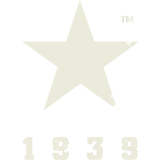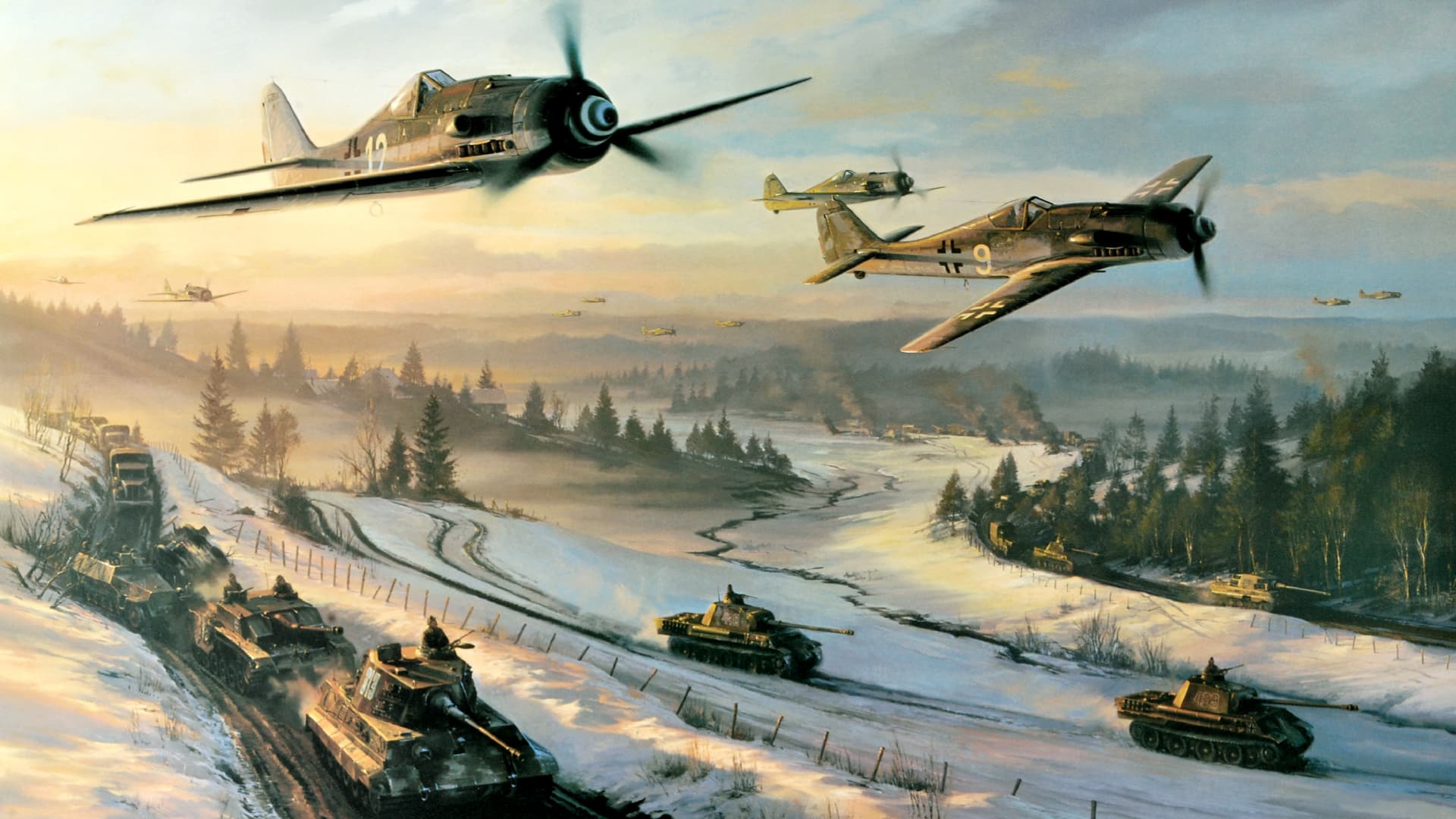
New KARDS update "Battle of the Bulge" is live!
over 3 years ago
sxqBtp
Massive news from the KARDS battlefield: The famous Battle of the Bulge, Germany's last major offensive on the Western front, has arrived on the battlefield with this latest update on March 31st.
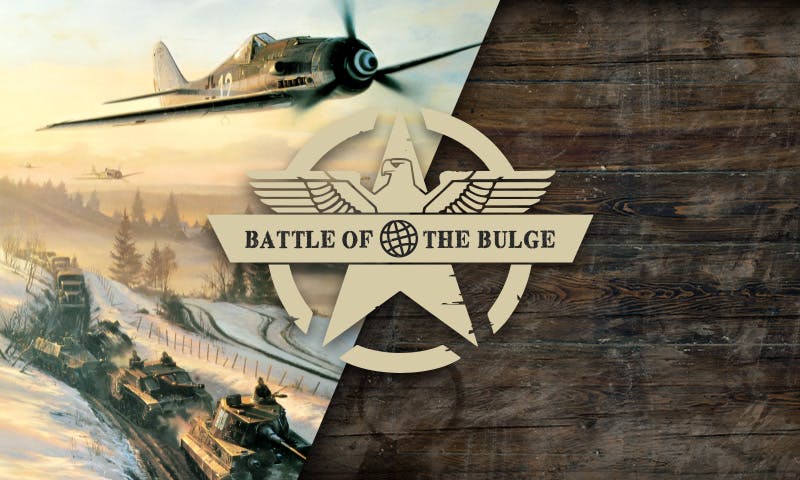
True to its historical counterpart, this update focuses on Germany and the USA; most of the new cards will be ground units.
This fourth installment in our series of historically themed updates brings reinforcements to the battlefield with 7 unique new cards (18 in total), general improvements, and alternate art.
Additionally, a special, time-limited event with alternate game rules lets you explore all new cards, even if you don't own them.[
Join now and check it out!
Battle of the Bulge in KARDS
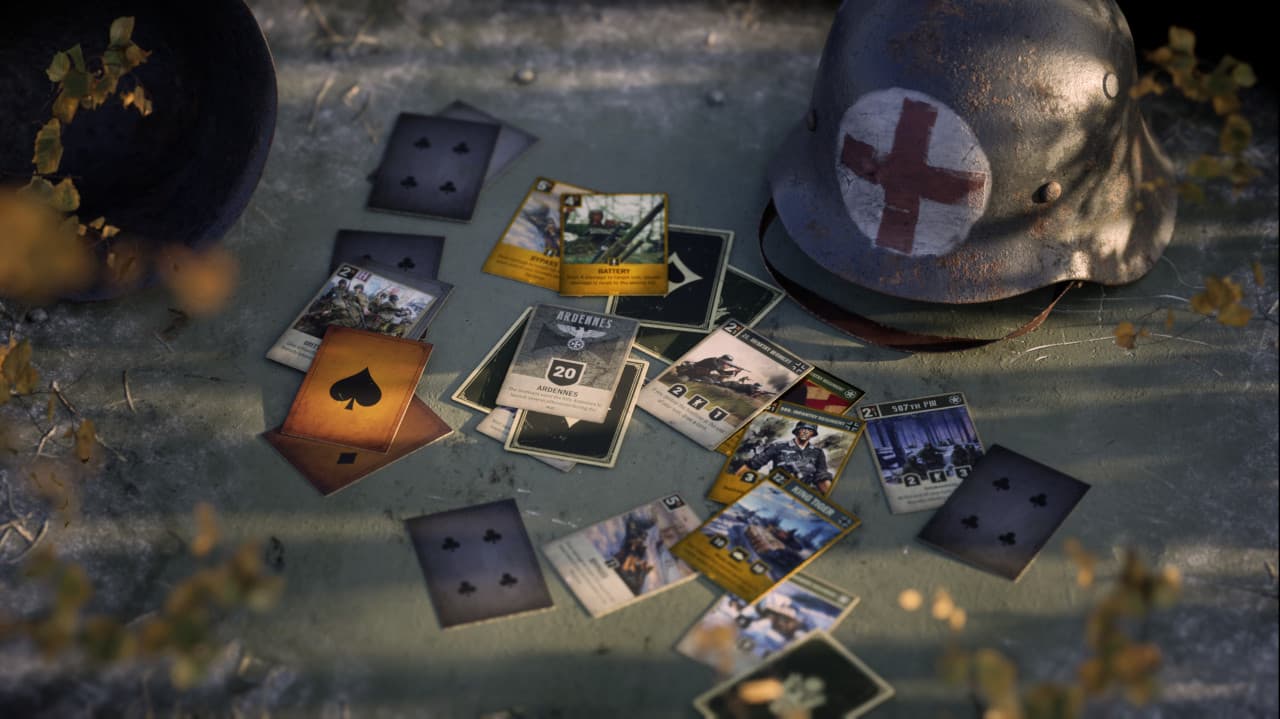
This update focuses on the late war at the western front and the clash between German units and the advancing USA.
Highlights of this update are the Elite and two Special cards, while the standard and limited-rarity cards are valuable additions to the theme.
Without a doubt, the biggest and most iconic card of this update is the legendary German King Tiger panzer. A behemoth in its own right, this elite card will be a pride to any collector. Not every unit needs to be such a monster. As history shows, even seemingly weaker units can turn the tide of the battle. For example, the US 112th Infantry Regiment saw heavy action during the Battle of the Bulge and was in the center of the attack.
All of the cards, effects and strategic background are deeply rooted in WW2 history.
This update comes with 7 unique new cards (18 in total). Included in the premium version is also highly popular alternate art, a new German HQ and battlefield, gold versions of the Battle of the Bulge cards, a medic helmet as a new board item, and a sizable number of wildcards of all rarities.
KARDS is entirely free to play and stays like this. You can obtain the new cards in many ways, for example, by using wildcards or purchasing the Battle of the Bulge bundles for gold or diamonds.
Card details
This update adds 7 new cards to the collection; all of them are themed around the Battle of the Bulge and allow you to improve existing decks or create new deck variants.
KING TIGER
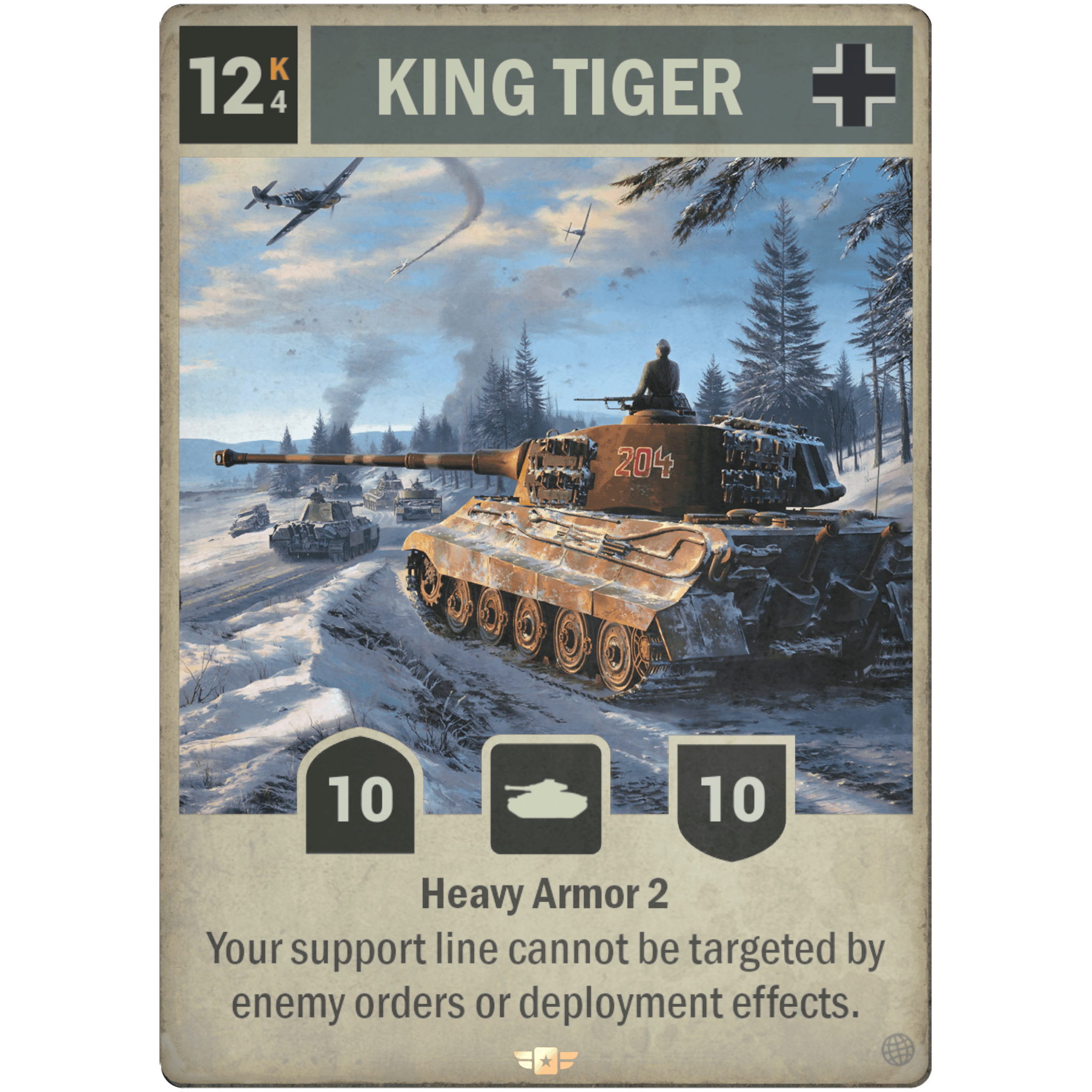
The King Tiger (German: Königstiger), official designation Panzerkampfwagen Tiger Ausf. B, was a German heavy tank that first entered service in 1944. The tank saw action on the Eastern Front and in Europe and its 8.8cm KwK 43 gun and armor made it a formidable weapon. It could knock out any Allied tank that came up against it and its thick armor made it almost impenetrable for any Allied weapon. The main problem with King Tiger was its reliability and many crews were forced to abandon the tank when it either broke down or ran out of fuel. Luckily for the Allies the tank was produced late and under the most difficult circumstances, both the bombing of German factories and lack of materials caused a series of delays and limited the production capabilities. Only 489 King Tigers were manufactured.
442ND INFANTRY REGIMENT
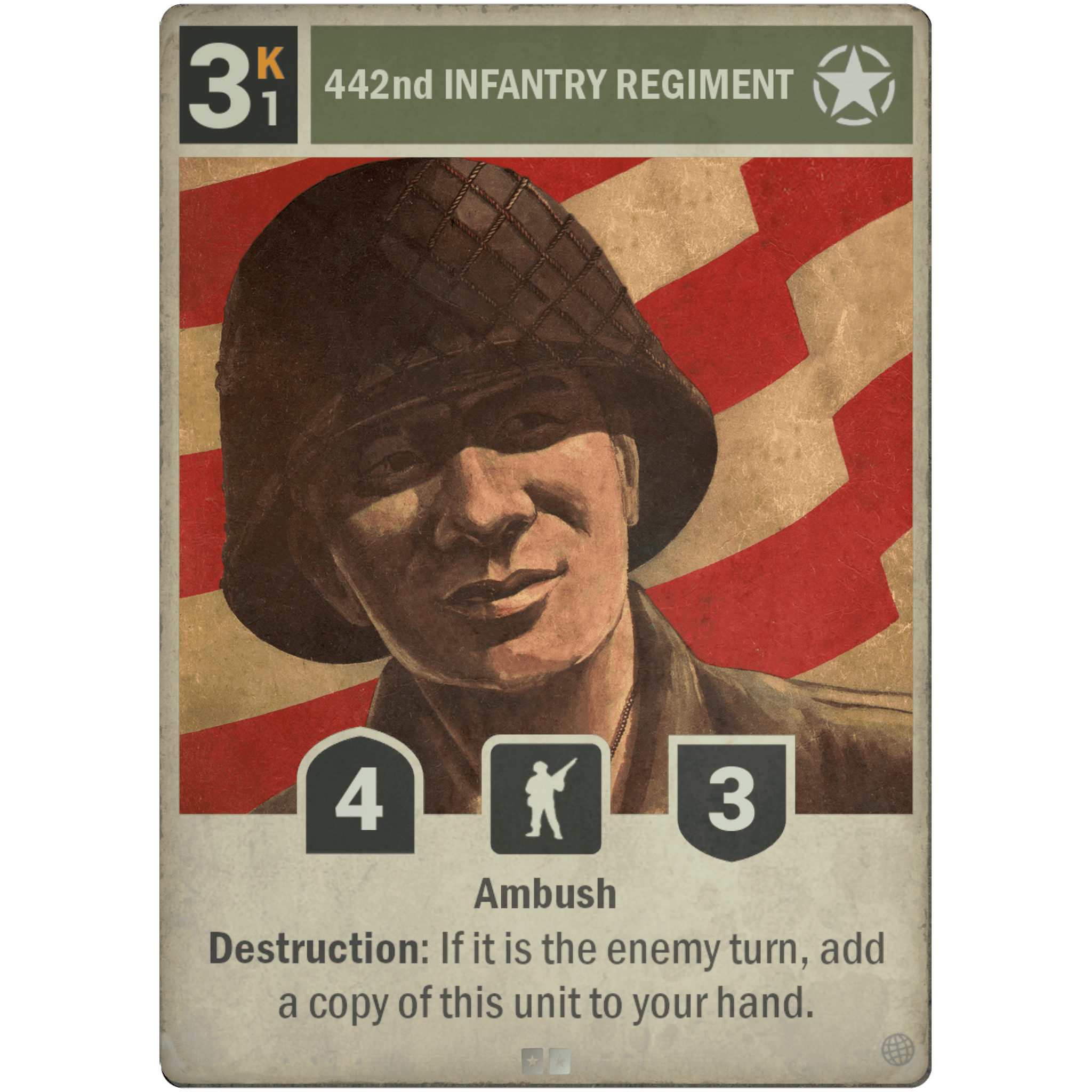
The 442nd Infantry Regiment, or the 442nd Regimental Combat Team (RCT) was a fighting unit that was composed almost entirely of American soldiers of Japanese ancestry (Nisei). The unit was active from 1944 to 1946 and during that time it became the most decorated regiment of the US Army. The 442nd RCT was composed of the 1st, 2nd, 3rd Infantry Battalions, 522nd Field Artillery Battalion, 232nd Engineering Company, an Anti-Tank Company, Services Company, Medical Detachment, and a Headquarters Company. From 1944 to 1945 the 442nd fought mainly in the European Theater, mostly in Italy, Southern France and Germany, and participated in numerous operations and campaigns during their brief service time. What is special about the regiment apart from its distinguished combat performance, is that they were all volunteers, and while they were fighting, many of their families were held in internment camps on US soil.
BATTERY
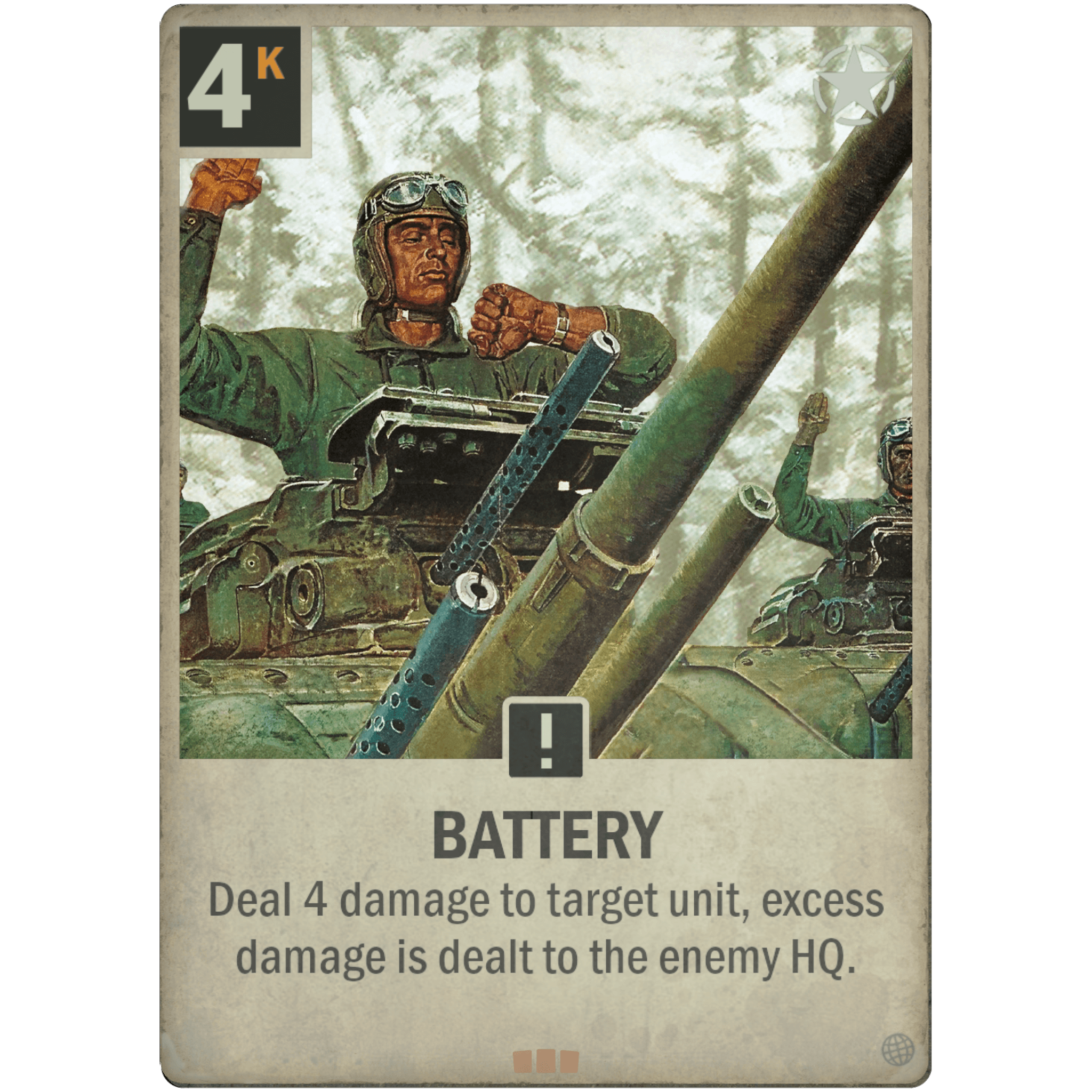
An artillery battery is a grouping of artillery, mortars, rocket artillery, multiple rocket launchers, and in later years surface-to-surface missiles, ballistic missiles, cruise missiles, and other equipment designed to improve command and control of gunnery crews and their systems. General Patton often commented that the US artillery won the war for them, and one example of its importance was during the Battle of the Bulge. Due to bad weather Allied air superiority was out of the picture, which meant that the artillery had to fill the void. The US Army managed to amass around 350 guns of all calibers in the northern sector of the Bulge which was one of the largest concentrations of artillery in history. This massive firepower helped slow down the German advance and proved vital in the Allied defense of Elsenborn Ridge and Bastogne.
BYPASS
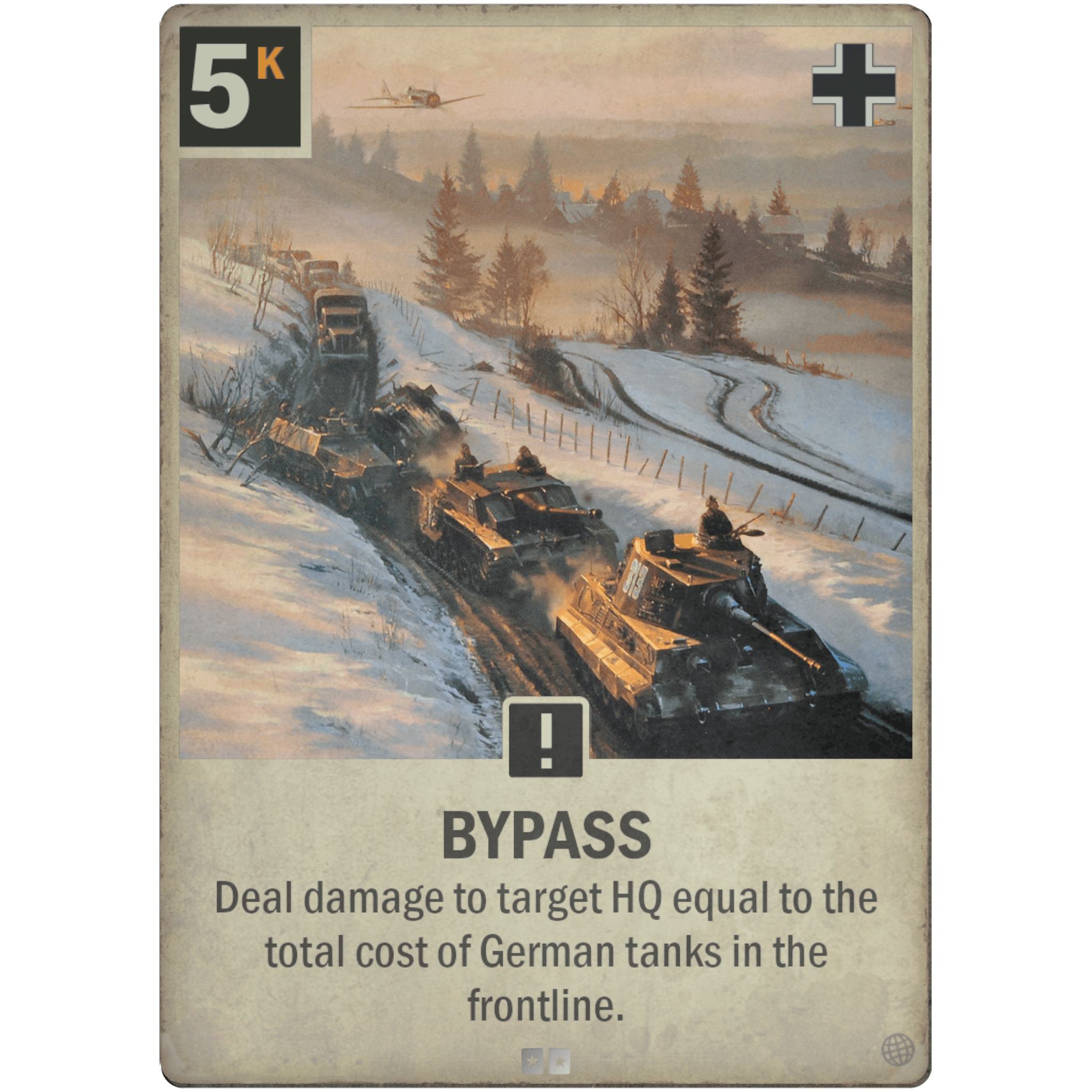
German military tactics during WWII focused on maneuverability, with combined air and mechanized and armored ground attacks at the center stage. In the opening battles of World War II, German forces ran over, through and around every enemy defensive position in their way. Today their military doctrine is known under the term “Blitzkrieg”, but this term was rarely used by the Germans at the time as the tactic was based on Bewegungskrieg (maneuver warfare), a traditional military tactic that was known to be used by Hannibal the Great and the Romans. This tactic focuses on defeating the enemy by incapacitating their decision-making through shock and disruption.
989. INFANTRY REGIMENT
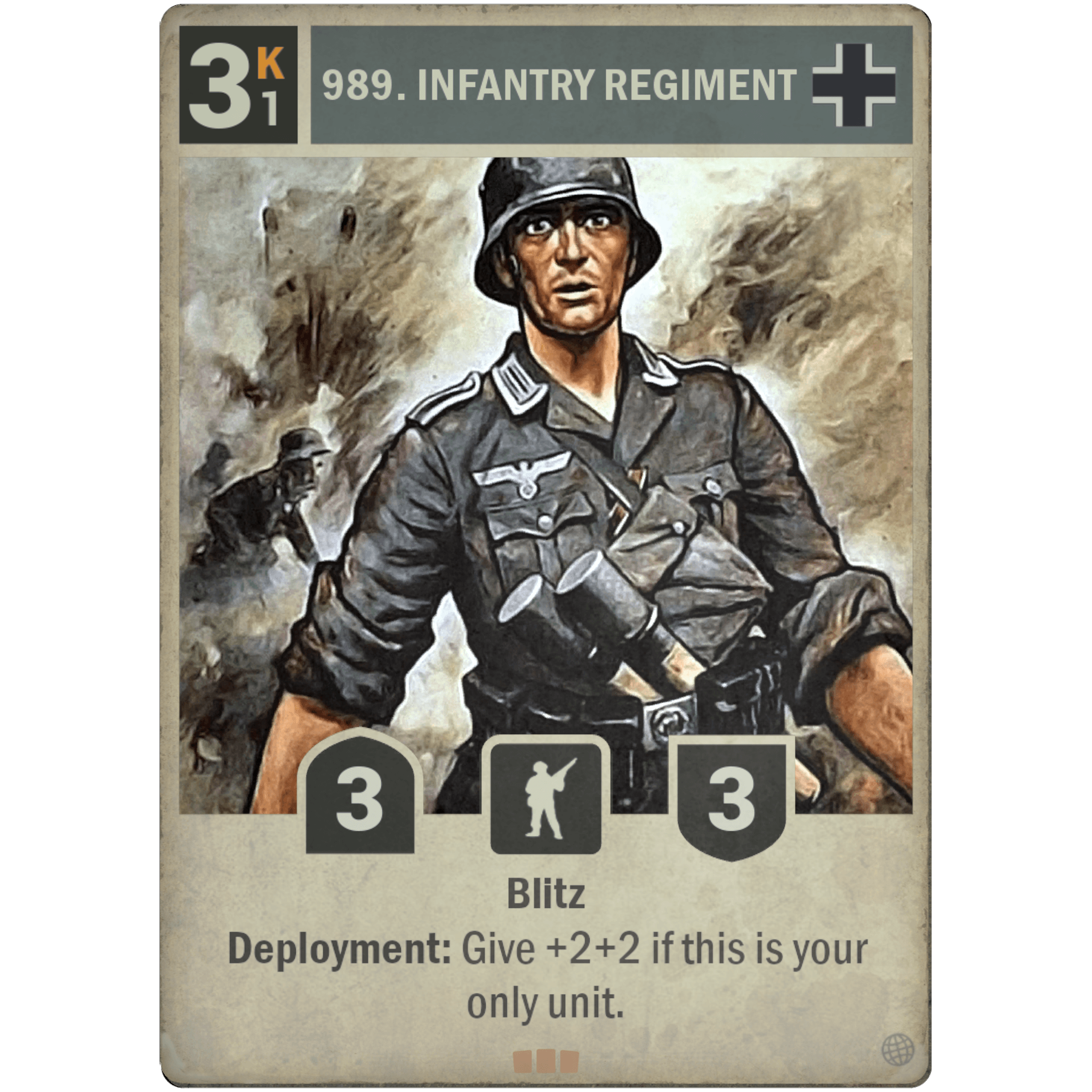
The 989th Grenadier Regiment was a unit of the 277th Infantry Division of the Wehrmacht. The regiment was formed in 1943 in Croatia, and shortly after it was relocated to France, along with the 277th Division. In August 1944 the division participated in the Battle of Normandy where it was destroyed, but reformed in September 1944 and sent to defend against the Allied advance in Northern France and Rhineland. After that the regiment participated in the Ardennes Offensive where it fought with the 12th Volksgrenadier Division in an attempt to capture the Belgian villages of Rocherath-Krinkelt and Elsenborn, in what is now known as the Battle of the Bulge. During the battle the regiment suffered heavy losses and was forced to retreat into Germany where it continued fighting, mostly with new and inexperienced recruits, and by the end of March in 1944 the regiment had been defeated.
P-47D-25-RE
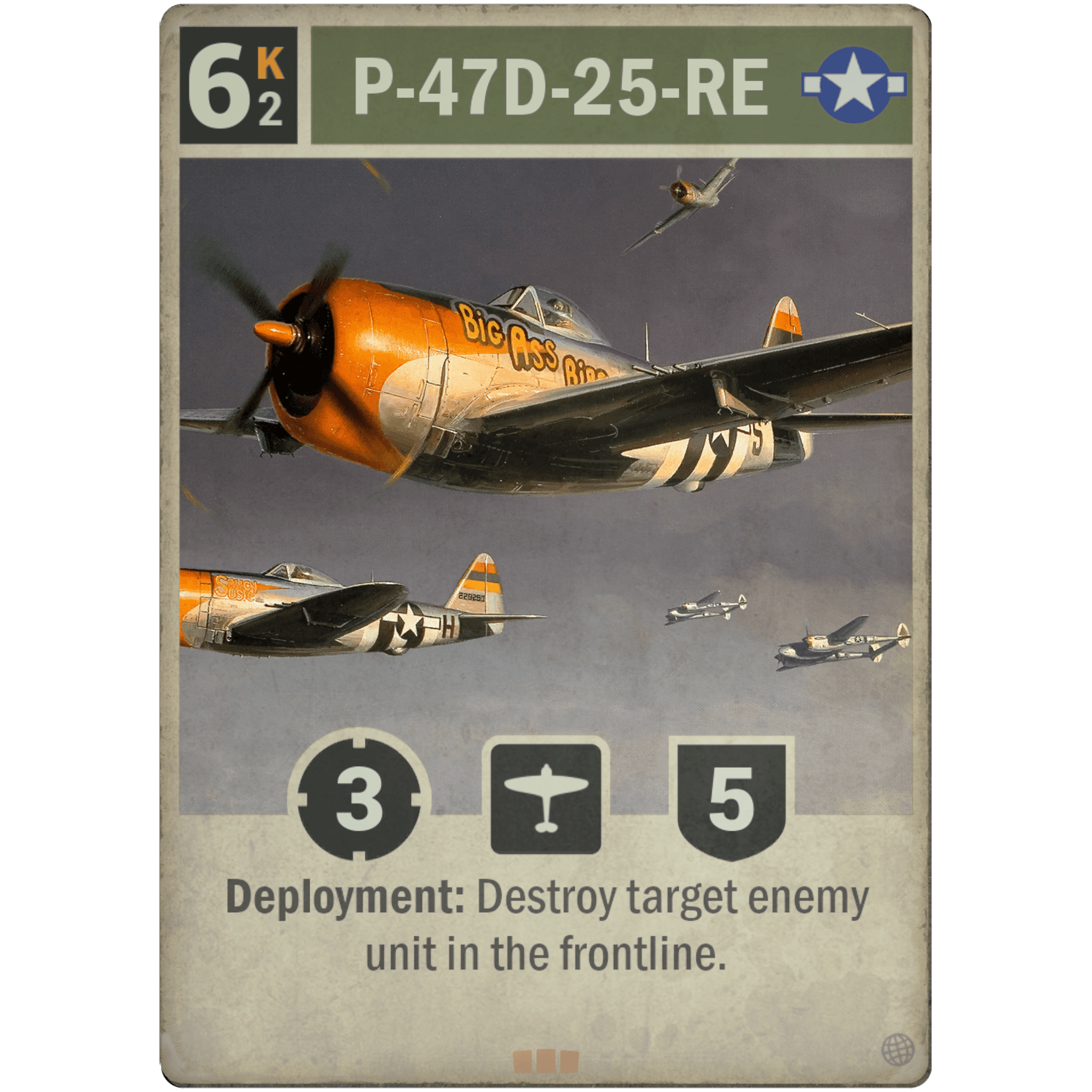
The P-47D-25-RE was a Republic P-47 Thunderbolt variant, an American fighter aircraft that was developed during WWII and used by the US States Army Air Forces (USAAF) and RAF. The P-47D-25-RE was the first Thunderbolt variant produced with a bubble canopy, a design that was based on the Hawker Typhoon. This improved the pilots rear vision, and so did the flatter rear fuselage needed to allow the new canopy to be installed. The P-47D series came first into service in 1943 and were used by the USAAF and RAF and were used in the roles of fighter-bombers, in ground-attacks and as short-to medium-range escort fighters. The P-47D’s came with an armament of eight .50 machine guns and could carry a 2,500lb bomb load, or ten 5-inch rocket projectiles. A total of 15,636 Thunderbolts were built, 385 of them were the P-47D-25-RE variant.
112TH INFANTRY REGIMENT
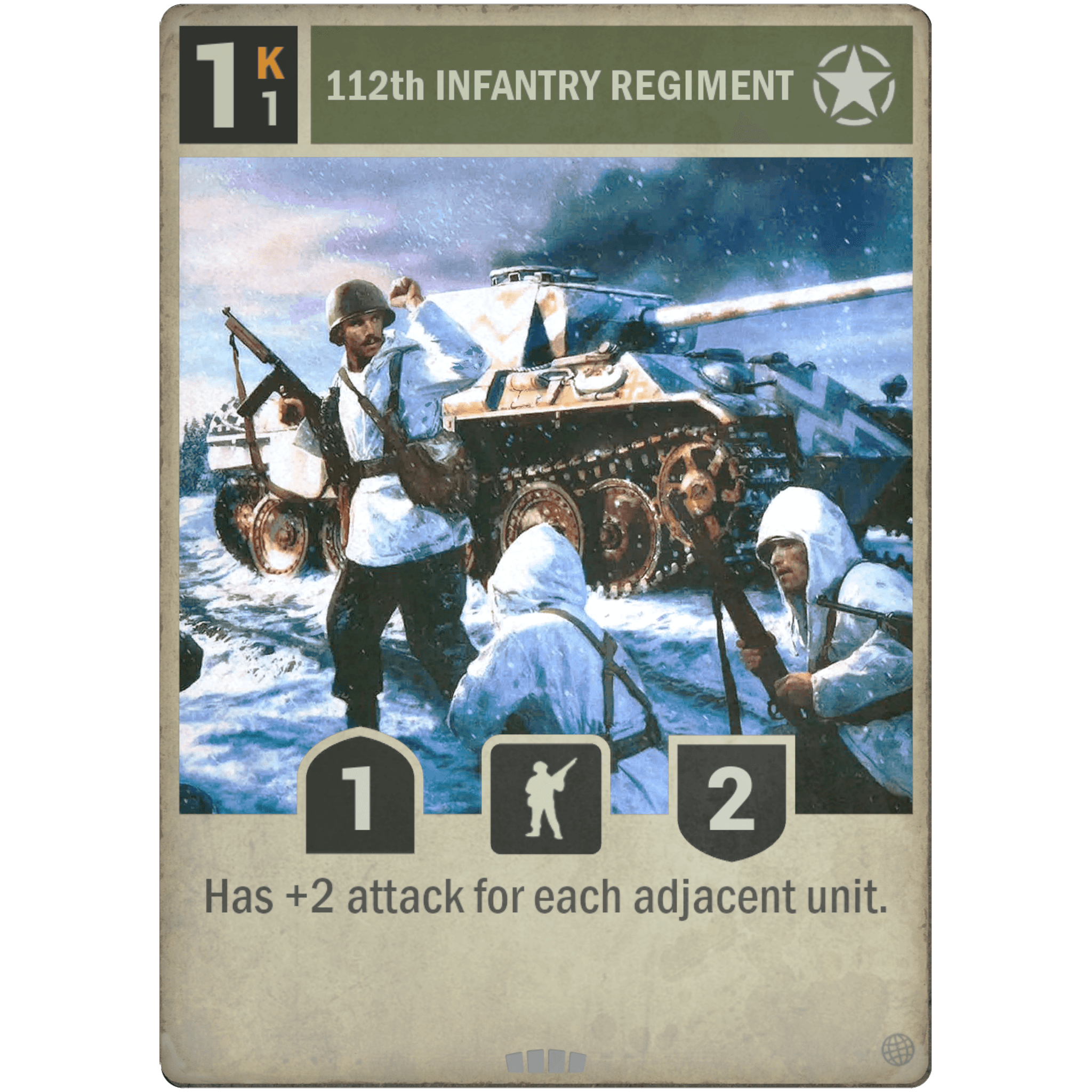
The 112th Infantry Regiment of the US Army dates back to the American Civil war and has since participated in several conflicts, including WWI and WWII. During WWII the regiment landed in Normandy in 1944, after D-Day, where it became the 112th Infantry Regimental Combat Team (RCT). Apart from the infantry the RCT included several support units, the 229th Field Artillery Battalion, the 103rd Engineer Battalion, Company C, 447th Antiaircraft Artillery Battalion, and Company C, 630th Tank Destroyer Battalion. After Normandy the 112th participated in the liberation of Paris and later the Battle of Hürtgen Forest (19 September to 16 December 1944) where the regiment was at one point reduced to 300 men during an engagement. The US soldiers nicknamed the Battle for Hürtgen Forest “the meat grinder”, and for good reason since it is the longest single battle US forces have ever fought and one of the bloodiest. Following Hürtgen Forest the 112th RCT fought in the Battle of the Bulge, where it defended a sector of 100 km where 9 German divisions concentrated their attacks. During the Battle of the Bulge the 112th RCT managed to inflict 1600 casualties and destroy 18 enemy tanks, for which it received the Distinguished Unit Citation which is rewarded for extraordinary heroism in action.
Special Launch Event
To celebrate the arrival of this update, we will also have a special in-game event ready. This event is open for everyone and runs from March 31st to April 2nd.
With this event, you can enjoy all the new Battle of the Bulge cards for free as you enter the battle on the side of Germany or the USA.
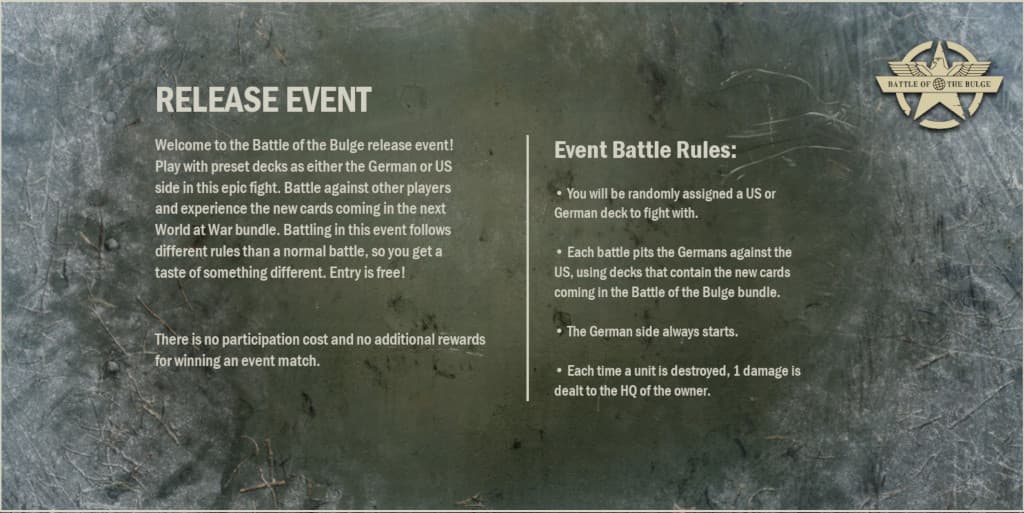
Participation is entirely free; have something special with a new format. Just hop in and enjoy!
We hope you enjoy this update and the new tactical options it brings. Don't forget to join the special event for some good fun!
